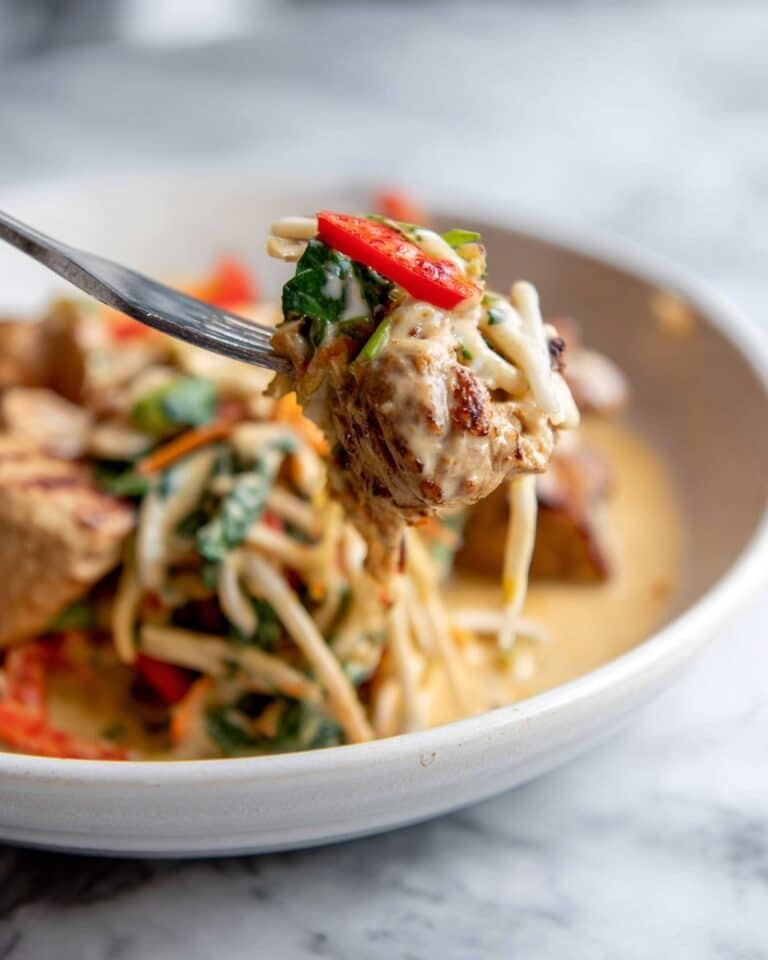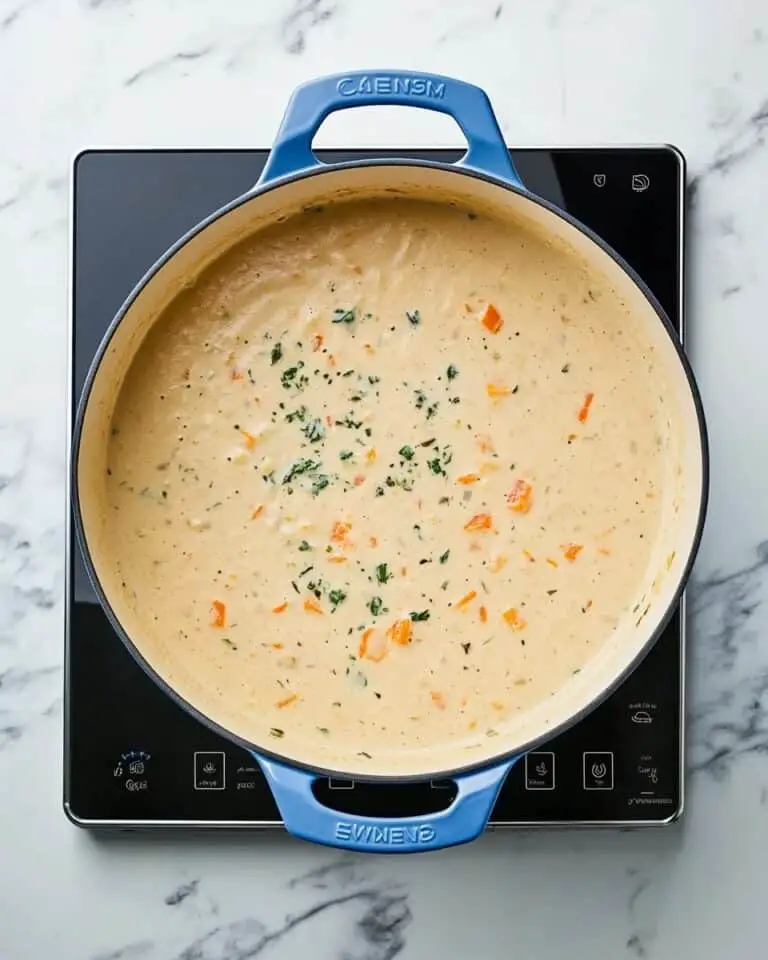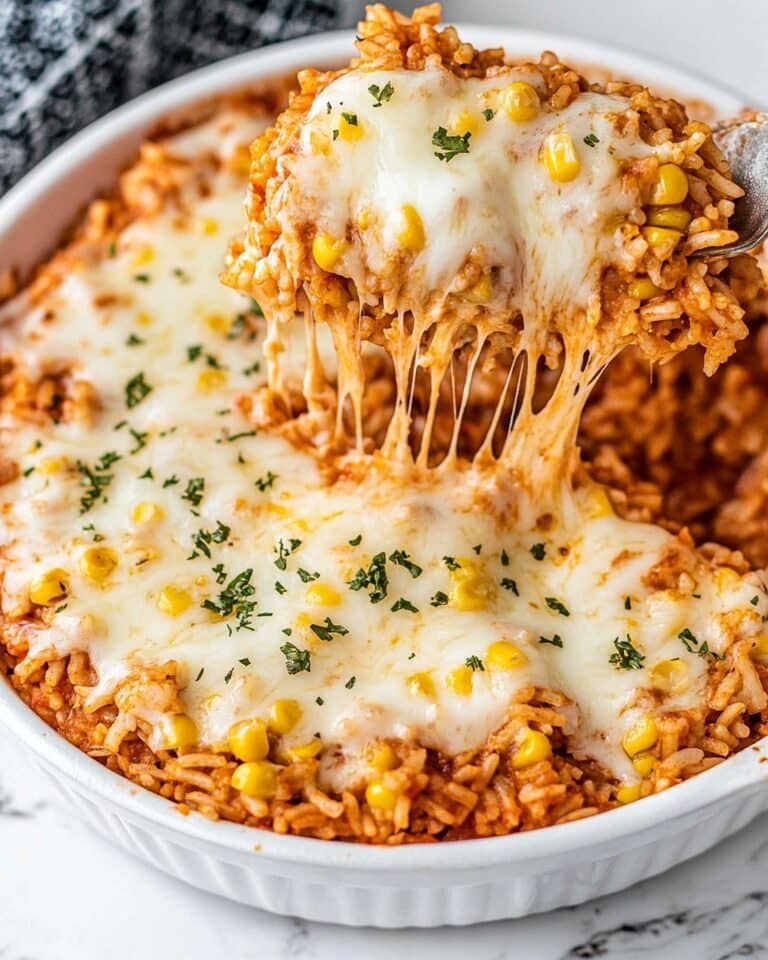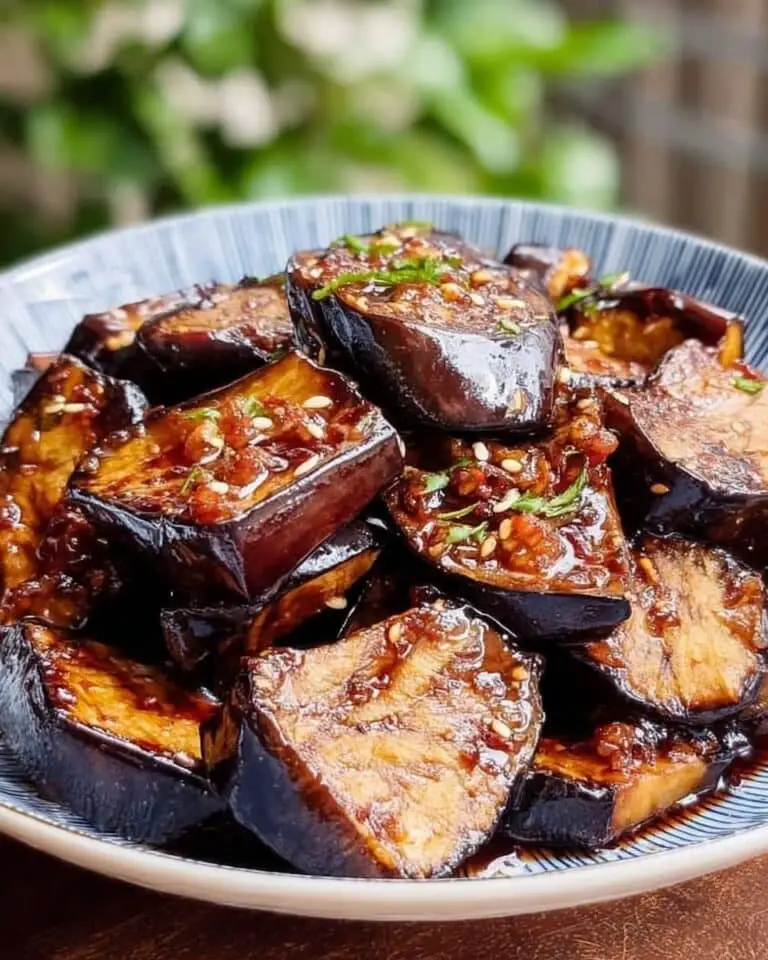Korean Rice Balls Recipe

If you love the idea of a portable, flavorful snack that’s as comforting as it is versatile, you’re going to fall in love with this Korean Rice Balls Recipe. These little bites are warm, savory, and packed with a variety of fillings that make each one a delightful surprise. Honestly, they’ve become my go-to when I want something satisfying but easy to eat on the run—or even packed for a picnic.
What makes this Korean Rice Balls Recipe truly special is how customizable it is. Whether you’re a fan of spicy kimchi, savory bulgogi, or something milder like tuna mayo, you can mix and match fillings to fit your mood. Plus, the sesame oil and roasted seaweed coating add that perfect nutty, umami punch you’ll crave again and again.
Ingredients You’ll Need
The ingredients for this Korean Rice Balls Recipe come together beautifully—simple on their own but magic when combined. Choosing good quality short-grain rice is key to getting that perfect sticky texture, and having a couple of filling options means you can cater to different tastes or whatever you have in the fridge.
- Short-grain rice: This type of rice sticks together so well, making it perfect for shaping rice balls without falling apart.
- Sesame oil: Adds a toasty, nutty aroma that’s signature Korean flavor territory.
- Salt: Just a little to season your rice and bring out the other flavors.
- Canned tuna: Convenient and pairs gorgeously with mayonnaise for a creamy filling.
- Bulgogi beef: If you can get it pre-cooked and chopped, it adds a rich, savory punch.
- Kimchi: For that tangy, spicy kick—drain it well to keep rice balls from getting soggy.
- Cooked chicken: Mix with soy sauce for a simple yet delicious filling.
- Roasted seaweed flakes (gim): This gives the rice balls a delightful crunch and umami coating.
- Sesame seeds: For texture and a subtle nutty finish.
- Soy sauce: A dash to enhance seasoning and depth.
- Gochugaru (optional): Korean red pepper flakes if you want extra heat and flavor complexity.
Variations
One of my favorite things about this Korean Rice Balls Recipe is how easy it is to make it your own. I often experiment with different fillings or swap ingredients based on what’s in my pantry. Don’t be afraid to try new twists!
- Vegetarian option: I’ve had great results using mashed avocado mixed with sesame oil and a pinch of salt as a creamy, fresh filling.
- Spicy kick: Adding a touch more gochugaru or swapping tuna mayo for a spicy sriracha mayo takes these rice balls to the next level.
- Seasonal veggies: Finely chopped steamed spinach or carrots can make for a colorful, nutritious twist.
- Gluten-free: Simply omit soy sauce or use tamari to keep it gluten-friendly without sacrificing flavor.
How to Make Korean Rice Balls Recipe
Step 1: Prepare Your Rice Just Right
Start with 2 cups of cooked short-grain rice, ideally still warm. If your rice has been refrigerated, warm it gently in the microwave or steam it briefly. This warmth makes the rice sticky and easier to handle. Stir in 1 tablespoon of sesame oil and ½ teaspoon salt evenly while the rice is warm to infuse those flavors throughout.
Step 2: Get Your Fillings Ready
Choose your fillings — maybe tuna mayo, bulgogi, kimchi, or chicken with soy sauce. If you’re using kimchi, make sure to squeeze out as much excess liquid as you can to avoid soggy rice balls. Finely chop the bulgogi or chicken for easy stuffing. Mix fillings ahead so the flavors meld nicely before assembly.
Step 3: Shape and Stuff the Rice Balls
Now for the fun part — wet your hands slightly to prevent sticking, then scoop a small handful of rice and flatten it into your palm. Place a spoonful of your chosen filling in the center and gently mold the rice around it, forming a compact ball. Don’t pack too tight, or it’ll be too dense; just enough to hold shape. I find pressing firmly but gently works best.
Step 4: Season and Coat for Extra Flavor
Once all rice balls are shaped, mix 2 tablespoons roasted seaweed flakes with 1 tablespoon sesame seeds, 1 teaspoon soy sauce, and ½ teaspoon gochugaru if you like heat. Roll each rice ball in this seasoning mix so each bite gets a lovely crunch and deep umami flavor. This step really elevates the dish beyond plain rice balls.
How to Serve Korean Rice Balls Recipe
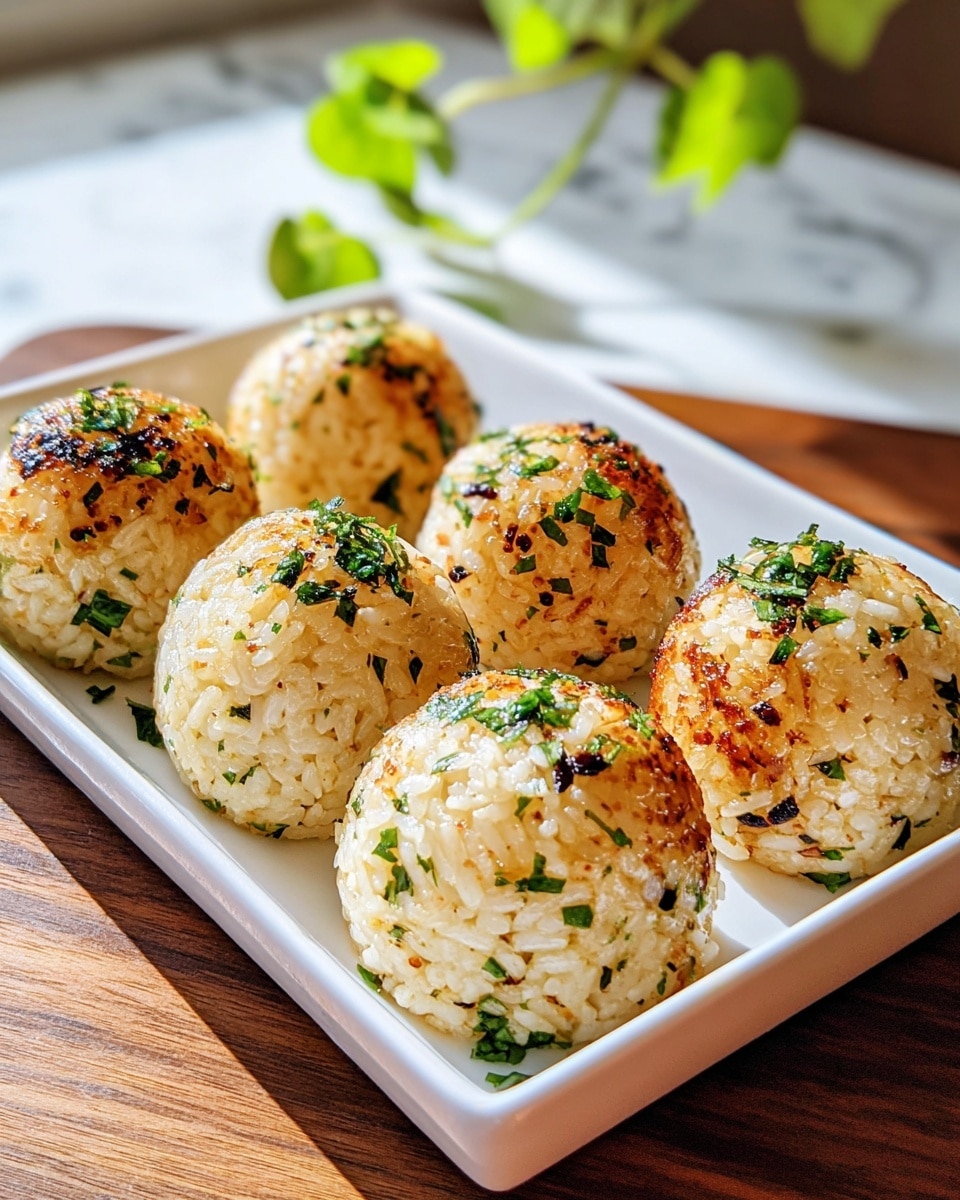
Garnishes
I like to sprinkle a little more toasted sesame seeds on top just before serving and sometimes add a tiny drizzle of soy sauce or a few thin strips of fresh green onion. It adds color and a fresh bite that balances the richness really nicely.
Side Dishes
For a complete Korean-inspired meal, I often pair these rice balls with a simple cucumber salad dressed in rice vinegar and sesame oil, or a bowl of mild miso soup. They also work perfectly as bento box stars alongside pickled veggies and a few pieces of fried tofu.
Creative Ways to Present
For special occasions, I’ve arranged these Korean rice balls on a platter and garnished with edible flowers and extra seaweed strips for a little flair. You can also shape them into fun forms like mini triangles or hearts to delight kids or guests. Presentation really makes these feel festive and inviting!
Make Ahead and Storage
Storing Leftovers
If you have leftovers, I recommend wrapping each rice ball individually in plastic wrap and storing them airtight in the fridge. They keep well for up to 2 days without losing too much texture. Just remember the seaweed seasoning can get a bit softer in the fridge, so you might want to sprinkle some fresh toasted seeds after reheating.
Freezing
Freezing works surprisingly well! I like to freeze them individually, wrapped in plastic, on a tray first and then transfer to a freezer bag. When you want a quick snack, thaw in the fridge overnight, then gently reheat. It’s super convenient on busy days.
Reheating
The microwave is your friend here—place a damp paper towel over the rice balls to keep moisture in while reheating for about 30-60 seconds. This helps them warm through without drying out. I avoid direct heat like a pan because the filling might dry out before the rice warms evenly.
FAQs
-
Can I use brown rice instead of short-grain white rice?
You can, but keep in mind brown rice isn’t as sticky, so shaping the Korean rice balls might be trickier. To improve stickiness, try slightly overcooking the rice or mixing in a bit of cooked glutinous rice along with the brown rice.
-
What’s the best way to keep rice balls from falling apart?
Working with warm rice that has enough sesame oil and moisture is key. Also, wetting your hands slightly before shaping prevents rice from sticking and tearing. Don’t pack the rice too tightly as well—firm but gentle pressure keeps them intact while keeping the texture light.
-
Can I prepare the fillings in advance?
Absolutely! In fact, making fillings like bulgogi or tuna mayo ahead of time lets flavors develop nicely, making your Korean rice balls even tastier. Just keep fillings refrigerated until you’re ready to assemble.
-
Is this recipe suitable for kids?
Definitely. You can keep fillings mild for kids, such as simple tuna mayo or cooked chicken seasoned lightly. Avoid spicy kimchi or gochugaru if your kids are sensitive to heat.
-
How spicy are the rice balls with gochugaru?
Gochugaru adds a mild to medium heat with smoky undertones—not overwhelmingly spicy but definitely gives a nice kick. If you’re heat sensitive, start with a small amount or omit altogether.
Final Thoughts
I honestly love making this Korean Rice Balls Recipe whenever I need a quick meal or snack that doesn’t feel boring. It’s one of those recipes where you get to play around with flavors and fillings, making it perfect for all kinds of taste buds. Give it a go—I promise you’ll enjoy the warm, comforting bites and the little flavor explosions in every mouthful.
PrintKorean Rice Balls Recipe
Delicious and versatile Korean Rice Balls featuring warm, seasoned short-grain rice filled with your choice of savory ingredients like tuna, bulgogi beef, kimchi, or shredded chicken. These bite-sized rice balls are coated with a flavorful blend of roasted seaweed flakes, sesame seeds, and a hint of Korean red pepper flakes for a perfect snack or light meal.
- Prep Time: 15 minutes
- Cook Time: 0 minutes
- Total Time: 15 minutes
- Yield: 8–10 rice balls 1x
- Category: Snack
- Method: No-Cook
- Cuisine: Korean
Ingredients
For the Rice
- 2 cups cooked short-grain rice (warm)
- 1 tablespoon sesame oil
- ½ teaspoon salt
Filling Options (Choose One or Mix & Match)
- ½ cup canned tuna, drained and mixed with 1 tablespoon mayonnaise
- ½ cup cooked bulgogi beef, finely chopped
- ½ cup finely chopped kimchi (squeeze out excess liquid)
- ½ cup shredded cooked chicken with soy sauce
For Seasoning & Coating
- 2 tablespoons roasted seaweed flakes (gim)
- 1 tablespoon sesame seeds
- 1 teaspoon soy sauce
- ½ teaspoon gochugaru (Korean red pepper flakes, optional)
Instructions
- Prepare the Rice: Start with warm, cooked short-grain rice. In a large bowl, gently mix the rice with sesame oil and salt until well combined. This ensures each rice grain is flavorful and moist.
- Prepare the Filling: Choose and prepare your preferred filling. For tuna, mix canned tuna with mayonnaise. For bulgogi, finely chop cooked bulgogi beef. For kimchi, finely chop and squeeze out excess liquid. For chicken, shred cooked chicken and season with soy sauce.
- Form the Rice Balls: With wet hands to prevent sticking, take a small handful of the seasoned rice. Create an indentation in the center and add about 1 tablespoon of your chosen filling. Mold the rice around the filling, forming a tight ball about the size of a golf ball.
- Prepare the Coating: In a shallow dish, combine roasted seaweed flakes, sesame seeds, soy sauce, and gochugaru if using. This mixture will add a crisp, flavorful outer layer to your rice balls.
- Coat the Rice Balls: Roll each rice ball lightly in the seasoning mixture until evenly coated. Ensure the seaweed flakes and sesame seeds stick well to the surface for maximum flavor and texture.
- Serve: Arrange your Korean rice balls on a serving plate. They can be enjoyed immediately while warm or wrapped individually for a portable snack or lunch option.
Notes
- Use warm rice to make shaping easier and to help the rice balls hold together better.
- Wet your hands with water or lightly oil them to prevent rice from sticking while forming the balls.
- The gochugaru is optional but adds a nice mild spicy kick to the coating.
- Feel free to experiment by mixing different fillings for variety and flavor combinations.
- These rice balls do not require cooking after forming and can be eaten as is.
Keywords: Korean rice balls, onigiri, rice snack, sesame, bulgogi, kimchi, tuna salad, Korean cuisine, easy snack



